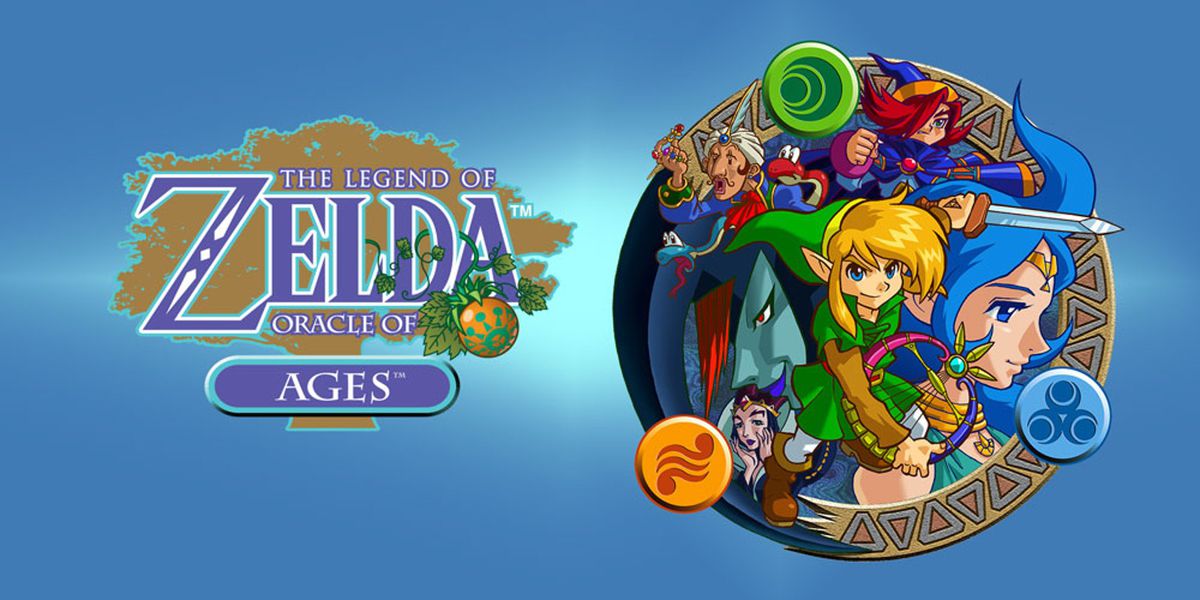Classic Zelda has never felt as big as the Oracle games
In 2001, Zelda games couldn’t get any better. The Legend of Zelda: Majora’s Mask had arrived the year before, a beautifully melancholic sequel to Ocarina of Time — the series’ stunning 3D debut, which was also immediately recognized as one of the best games ever made. Nintendo had once again broken new ground with its critically acclaimed fantasy adventure series. The future of gaming was here and there was no looking back.
In 2023, Polygon will start a Zeldathon. Join us on a journey through The Legend of Zelda series, from the original 1986 game to the release of The Legend of Zelda: Tears of the Kingdom and beyond.
Except, there was. That year, Nintendo’s wildly popular Game Boy Color would get a pair of new Zelda games, riding the wave started by their Nintendo 64 predecessors. The Legend of Zelda: Oracle of the Ages And The Legend of Zelda: Oracle of Seasons were called “an adventure too big for just one game,” and to everyone’s surprise, they kept that promise.
Oracle of the Ages And Oracle of seasons were new for several reasons, the main one being that they were the first games in the franchise not made by Nintendo. Developed by Capcom (which also produces the beautiful Minish hood), the Twins Oracle games recorded after previous Game Boy entry Link’s awakening, with identical art assets and controls, except for color. While the games were visually similar to what Zelda fans had previously seen on the Game Boy, they were packed with new ideas once players dived in.
Both games start the same way: Link, summoned by the Triforce to a remote temple, is magically taken to a new land. Which country depends on the game: Oracle of seasons takes place in Holodrum, and Oracle of the Ages in Labrynna. Each game revolves around the Oracles of the same name, Nayru Ages and Din-in Seasonswho are then kidnapped by the villain of their respective game, throwing their country into chaos.
From there the games vary greatly. Seasons has a more action-oriented focus, with the central mechanic centering on the Rod of Seasons, a magical staff that allows Link to turn the current season into Holodrum, revealing secrets or opening new paths depending on the changes on the map (a more , for example, can freeze in winter, allowing Link to cross.).
Oracle of the Ages is more centered around puzzles, with a time travel gimmick similar to Chrono trigger, albeit with a more localized scope. Using the Harp of Ages, Link can travel back and forth between Labrynna’s past and present, which is depicted on two different maps. Link’s actions in the past can change the map in the present, and details in the present can give the player clues on how to navigate the past.
The Oracle games that were completely different adventures were new then and still are. Most dual releases – for the few franchises they do – still follow the Pokémon model, where the game is largely the same and there are minor differences in each version. (The Fire emblem fate trio is a notable exception.) Oracle of the Ages And Seasons wasn’t just two complete games; they also made one big adventure together. Completing one will grant the player a password to access the other, unlocking a bonus act that reveals that the events of both games were orchestrated by a mysterious villain known to long-time fans.

Image: Nintendo
Oracle of the Ages And Oracle of seasons made 2D Zelda feel truly big at a time when the series’ jump to 3D had completely rewired what everyone thought “big” meant in a game, sparking a sudden shift in game design trends from abstraction to verisimilitude. However, the Game Boy Color was capable of none of this, and the team at Capcom found a way to make a 2D Zelda feel just as big, yet uniquely intimate.
The Oracle games’ password system not only added climactic action to the duology, it was also a way to send selected items back and forth; Whichever of the two games you played, there were extra plot details sprinkled in. These connections were small, but meaningful – they made Ages And Seasons it feels like a journey, where moving from one game to another, taking with you little bits of data scribbled into passwords, made the game’s journey bleed ever so slightly into the real world.
At their best, Zelda games are played on screens, but truly experienced in the player’s mind. They build an imaginative realm in your subconscious, with characters and stories depicted with vivid minimalism, both specific and universal. The Legend of Zelda is perhaps the closest thing to its own fairy tale, and the individual entries succeed when they make the player feel like they are both writing and participating in it. Oracle of the Ages And Oracle of seasons are great because the idea of a Zelda “too big for one game” hinted at a deeper fundamental reason why players connect so strongly with Zelda games: they’re too big for each one game, but also small enough to never be intimidating. So you could say these are the rare games that feel as big as we do.
